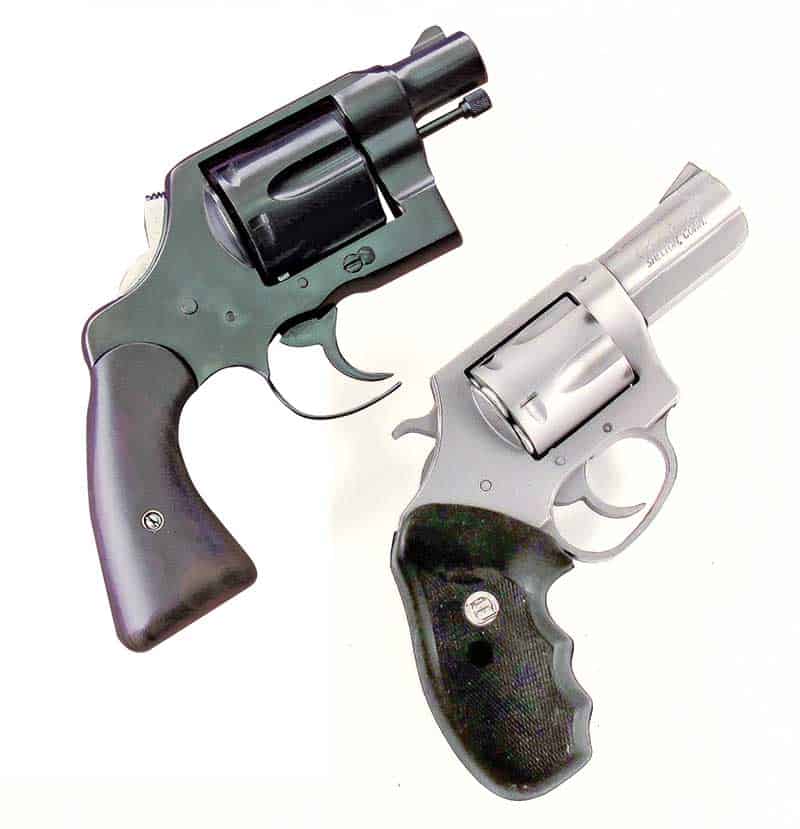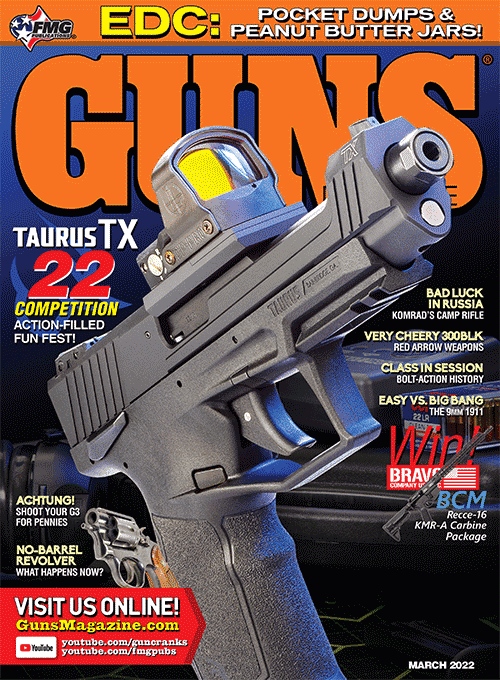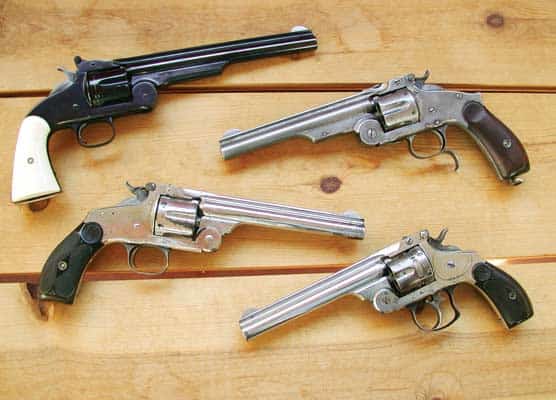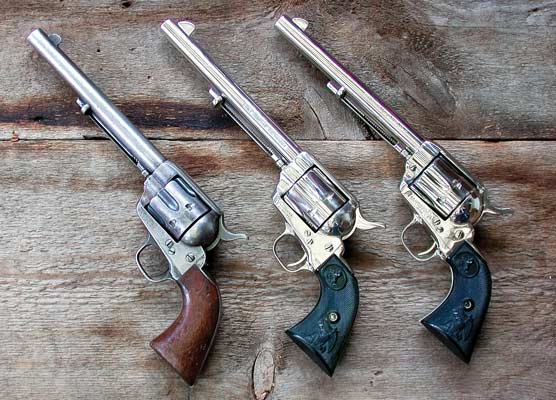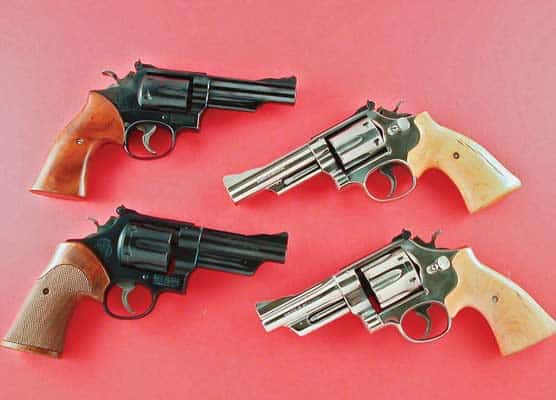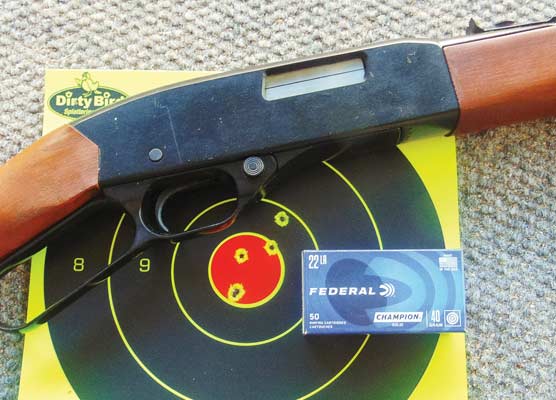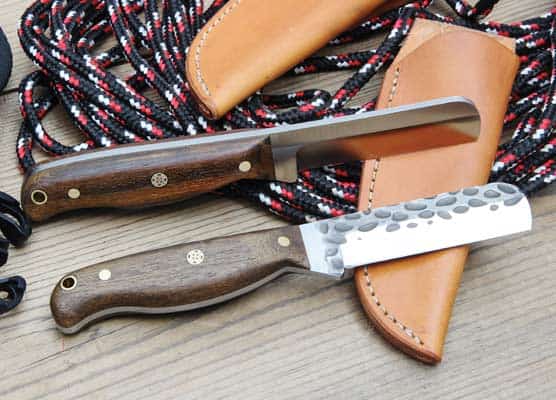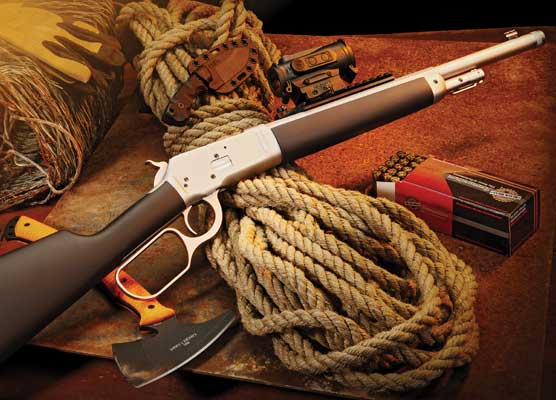Big Bore Belly Guns Part II
The Fitz Special
A Big Bore Belly Gun I yearned after for a long time was a Fitz Special. The last time I saw the late Col. Rex Applegate, I was accorded the rare privilege of a personally guided tour through his private museum. I had presented him with the coveted bronze as Outstanding American Handgunner in 1996 and knew his private museum held sixguns that had formerly belonged to special friends such as Col. Doug Wesson, Col. Charles Askins, Elmer Keith and Bill Jordan.
There, in front of me, were the first two Smith & Wesson .357 Magnums, one a 6-1/2″ and the other an 8-3/4″, which had been used by Col. Wesson to promote the first Magnum as a hunting handgun; Keith’s custom heavy-barreled 4″ .44 Magnum; two of Askins’ target pistols and the three 8-3/8″ Smith & Wesson Magnums that had been especially engraved to commemorate Bill Jordan’s varied career.
All of these handguns were special and a treat to see and hold, however, the Colonel’s favorite possession as far as firearms go was found immediately inside the door of the museum, the first item viewed. Actually it was one of two first items as this sixgun was resting upon the base of the Outstanding American Handgunner Awards Foundation bronze. The highly modified revolver may have started life as a standard Colt New Service .45 Colt but considering Col. Applegate’s many contacts, and his friendship with Colt’s John Henry FitzGerald, this revolver was probably one of the very few specially manufactured as it now appeared. On the side plate were the words “To Rex From Fitz.”
Col. Rex Applegate was one of the original members of the O.S.S. during World War II. After I got to know him, he sent me taped copies of the original footage of the training the men went through, the same training advocating a style of self-defense shooting known as point shooting. Until the day he died, he stayed with his original theory of point shooting that was definitely not hip shooting but rather employed with the handgun brought up, arm straight and the handgun “pointed” at the target.
Applegate was an expert on riot control and a colonel in the United States Army, however, he also held the rank of general in the Mexican Army after spending much of his time south of the border. It was during one of these excursions after World War II when his old .38 S&W “Lemon Squeezer,” always carried in a shoulder holster, nearly failed him by requiring all five shots to stop his attacker. After this experience, Applegate was highly responsible for the advent of five-shot Smith & Wessons chambered in .38 Special, especially the hammerless versions.
John Henry FitzGerald was “Mr. Colt” between the two World Wars, traveling to all the large pistol matches, shooting and fixing Colts and being a genuinely good ambassador for The Horse. Fitz was considered an expert, and spent much time lecturing and instructing both target and defensive shooting. Before Clint Smith, before Mas Ayoob, before Jeff Cooper, even before Col. Applegate, there was FitzGerald teaching principles and practices of quick shooting with a revolver. Not only was he a top shooter, he also designed the Fitz Special.
I first encountered the Fitz Special as a teenager in Col. Askins’ 1939 book. Askins said, “The grandest defense gun I have ever had was a Colt New Service with the barrel cut down to two inches.… The hammer had been dehorned … the trigger guard was cut entirely away in the front … the grip was shortened … it was a whiz for the purpose intended.”
Actually the Fitz Special started nearly 40 years earlier as Fitz started experimenting with the then-new Colt New Service. It was common knowledge among his contemporaries Fitz always carried a pair of .45 Colt Fitz Specials in his two front pockets. He definitely knew how to use them.
I’ve wanted to have a Fitz Special ever since I was the kid learning to shoot the big-bore sixguns of the 1950s. There was little hope of ever having an original, which would be a very rare and very expensive collectors’ item.
I was happy simply to have a top gunsmith build one for me on a Colt New Service. I earlier found what I thought would be the perfect candidate, a 5-1/2″ late model New Service in .45 Colt. Although having considerable pitting on the right side of the barrel and part of the cylinder, it was mechanically perfect and the interiors of both barrel and cylinder were like new. There was one major problem — it shot much too well to touch. A .45 Colt placing five shots, fired double-action standing at 50 feet, in less than 1-1/2″ is not to be messed with! I am a firm believer in “Don’t fix what ain’t broke.”
When a second late model New Service chambered in .44 Special surfaced, I had learned my lesson very well. Instead of shooting it, I sent the New Service off to one of the premier gunsmiths in the country, Andy Horvath. Horvath has built more than a half-dozen single-action sixguns for me. He turned the New Service .44 into a Fitz Special, which is why my Fitz Special is a .44 instead of a .45 as Col. Applegate’s — and the most-used chambering by John Henry himself.
FitzGerald had several factory-produced Fitz Specials for individuals, with more surfacing all the time. Charles Lindbergh had a Fitz and Hopalong Cassidy author Clarence Mulford also had a Fitz Special. His was not a .45 but started life as a .38-40 and was later changed to .44 Special.
In the early 1970s it was virtually impossible to find a factory .44 Special so Charter Arms came to the rescue by increasing the size of their Undercover .38, resulting in a new five-shot Bulldog .44 Special. The result was one of the best BBBGs ever offered and the new .44 was an immediate success because it was not only chambered in .44 Special but also for the first time in many years, shooters had a big bore pocket revolver. It probably got its name from the old English 19th-century pocket pistols that are also known as Bulldogs.
When our kids were growing up we had very little expendable money so we did things that cost very little such as camping and fishing. A second Bulldog, this time in stainless steel, was added to our family. The Bulldogs have logged many miles, seen many camping trips, been carried in boot tops, pockets and fanny packs and are still serving our family. They have even gone swimming when my wife fell in not once, but several times, while fly-fishing. That’s why I bought the stainless steel version. They never complained. Three times in my life I needed a gun for protection — two of those times the family was along and in both of those situations the Bulldog .44 was there when needed.
The kids are grown up with families of their own so we don’t do camping and fishing trips anymore, but the .44 Bulldogs are still on duty. My original blued 3″ Bulldog now rests in my desk drawer. This little gun carries what is probably the best designed wooden wrap-around grips to ever come forth from a factory for a small defensive revolver. Its stainless-steel brother, equipped with compact Pachmayr grips, is in the drawer of the bathroom cabinet off my gun room. The latest Bulldog .44 Special is the Bulldog Pug, stainless steel with a 2-1/2″ barrel. It’s in the medicine cabinet in the main bathroom. Why are these two stainless .44 BBBGs on duty in our bathrooms? The reason for the stainless steel should be obvious. (To be continued.)

Get More Revolver Content Every Week!
Sign up for the Wheelgun Wednesday newsletter here:
